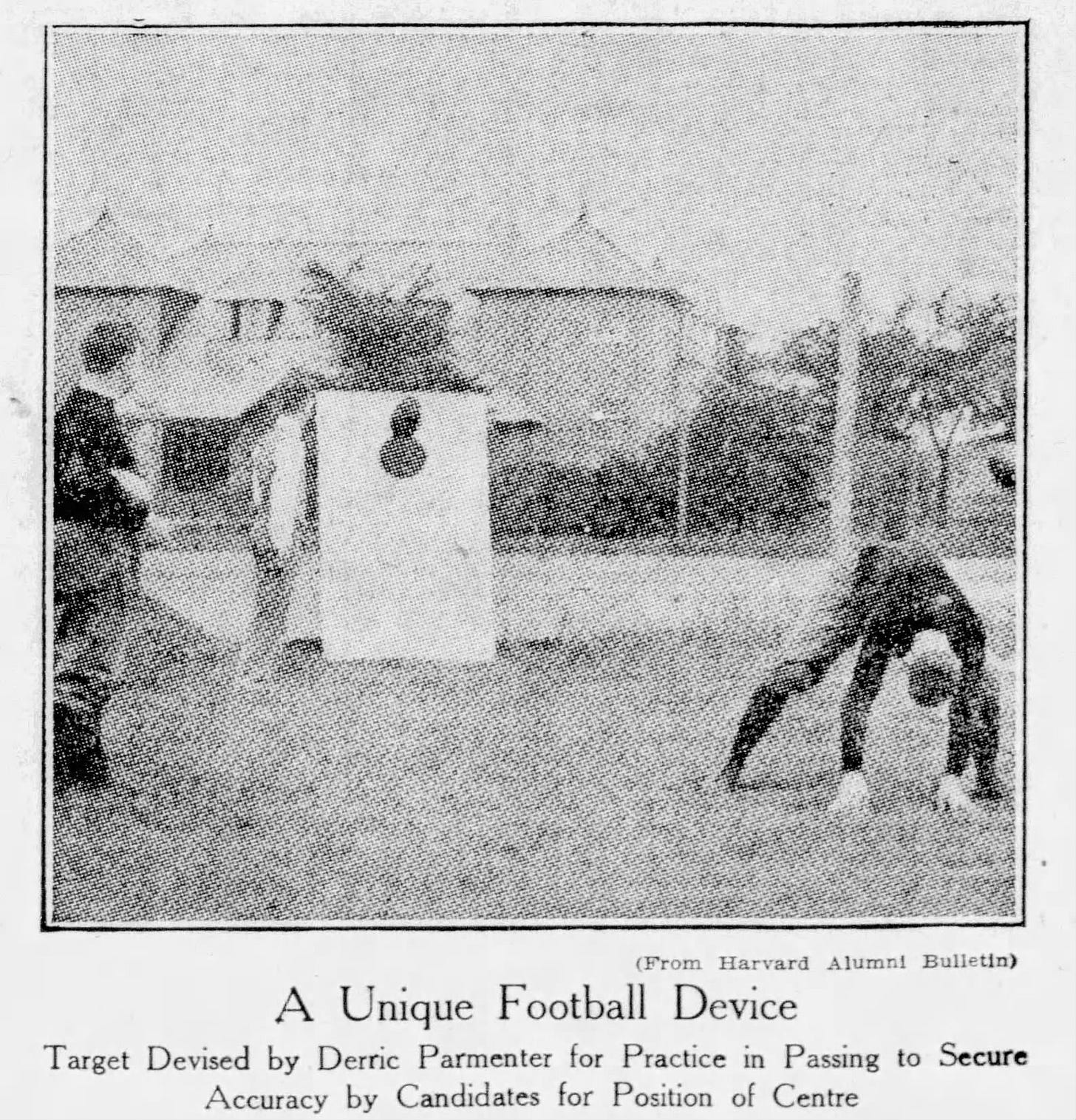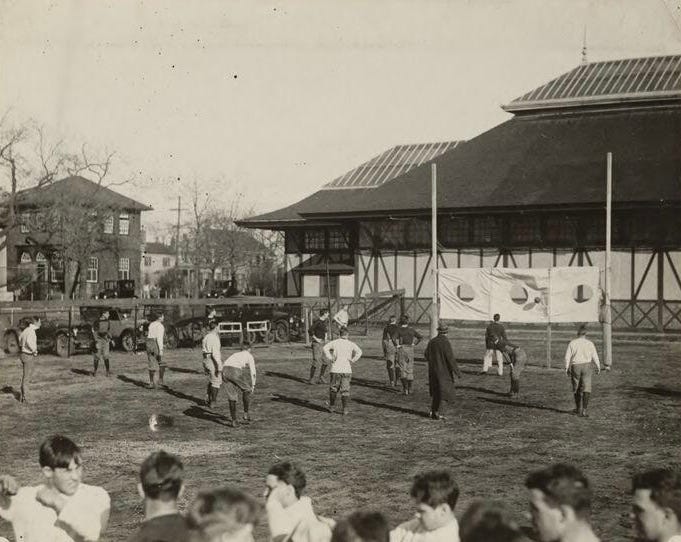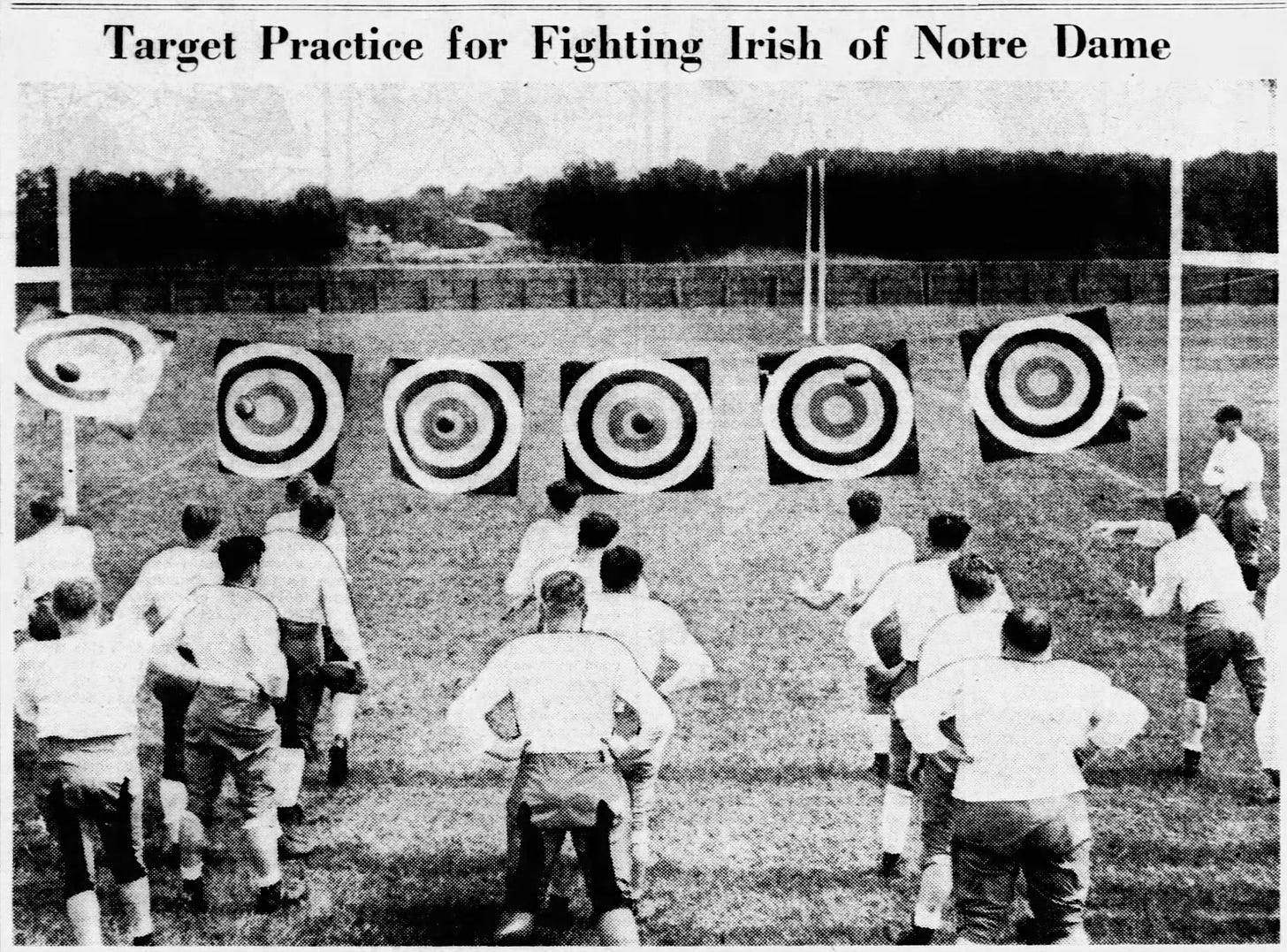Today's Tidbit... When Coaches Promoted Targeting
Football trends come and go. Someone comes up with a new technique or drill, and everyone copies it until someone else comes up with a better solution. Down the road, a third person picks up a routine from the past, tweaks it a bit, and another wave of copiers copy the copier.
Generally, there is nothing nefarious about the copying process. It's just a bunch of people seeking a competitive edge, with targeting being one of those trends. Of course, I'm not referring to helmet-to-helmet hits but to using targets in drills to promote the accuracy of passers and snappers.
It seems to me there has been an uptick in the last decade of using targets to train quarterbacks and long snappers. It may be that the expansion of the short passing game and the need to put the ball into tight windows makes target practice more meaningful than when the focus was on the downfield game. Likewise, specialized long snappers and the high school snapper training and evaluation industry emphasize tools to make their students better.
The first use of targets on football practice fields appears to have been in 1913 when Derric Parmenter, Harvard's undersized but starting center in 1912, agreed to coach the Crimson centers while he remained on campus for medical school. Parmenter set up easel-like wooden sheets with aiming holes to drill his centers. In those days, of course, most offenses positioned the quarterback away from the center, and the center snapped the ball directly to a halfback or fullback -often as they were moving- so long snapping accurately to different locations was highly valued.
Other than when he volunteered with the British Army Medical Corps during WWI, Parmenter continued coaching Harvard's centers until the mid-1920s and used targets throughout that time.

Shortly after Parmenter began using targets for snappers, they also came into use in the forward passing game. Tad Jones used them at Yale in 1916, as did Colgate in 1923 and Harvard in 1925.
Elmer Layden had his Irish passers using targets in the late 1930s, while Woody Hayes had his centers snap at targets hung between the goal posts in the late 1950s. Still, target practice seemed to go away for several decades after that before reemerging in the next century.
Scattered reports of quarterbacks and centers appeared early in the 21st century and grew in popularity. Commercially available versions of passer and snapper targets are now widely available. Still, the most famous use of targets for the short passing game now occurs during halftime of postseason games when the Dr. Pepper Challenge allows viewers to watch the worst possible passing forms in pursuit of tuition scholarships.
What would poor Derric Parmenter think of his invention now?
Football Archaeology is reader-supported. Click here to buy one of my books or otherwise support the site.







Besides being an inventor and a physician, scrappy Derry Parmenter was a hell of a player. On defense, he was an early middle linebacker.
A guy gave a talk at UVa about being on a beach with his dog. The dog always jumped into the water somewhat short of a place that would put him on a perpendicular, and the shortest, path. This insight led to many physics publications on how, "My Dog Does Calculus." It turns out the dog somehow figured out the exact right place to jump into the water.
A quarterback throwing at a target certainly doesn't reflect some of the incredible jinking, avoiding-tackler, moving throws to a likewise moving target! The receivers seem to be the marvels, but some clever guy could get lots of articles published on "My Quarterback Does Calculus."